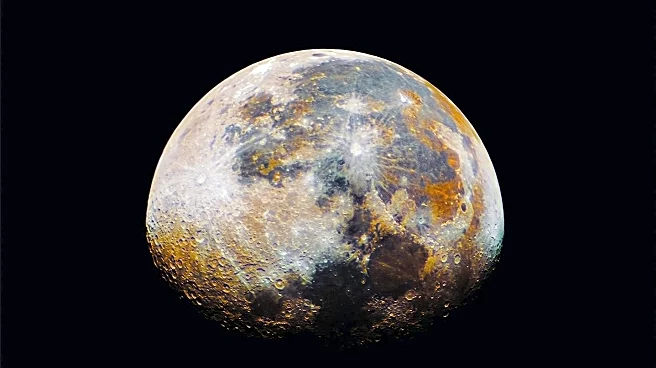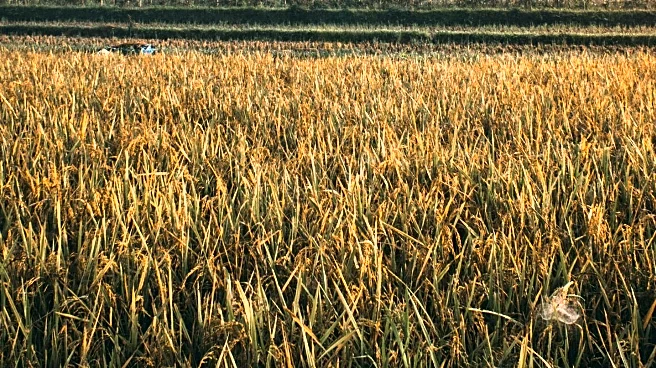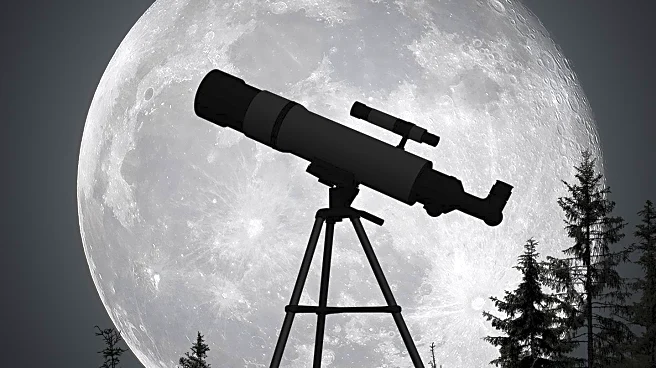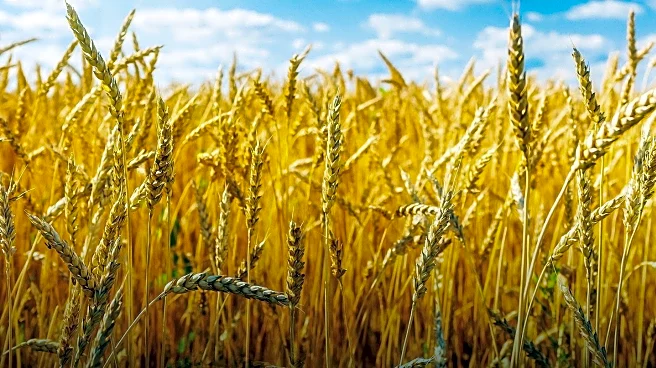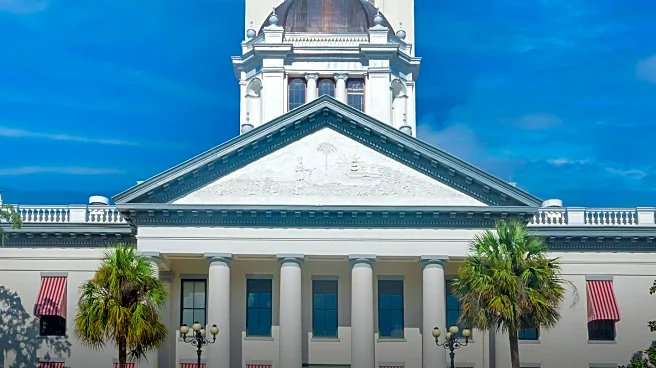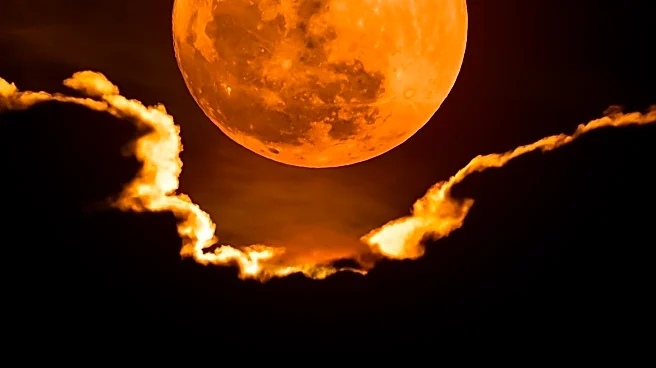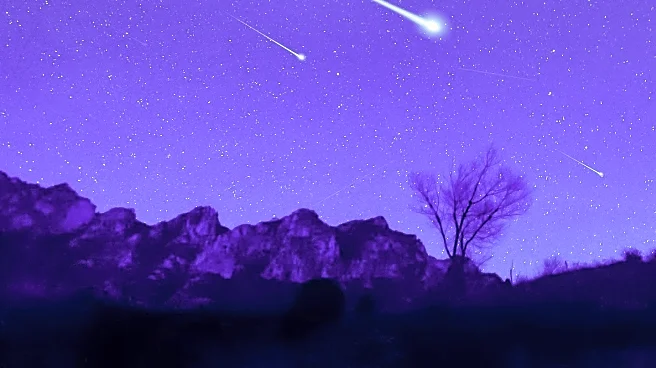What's Happening?
The first supermoon of 2025, known as the Harvest Moon, is set to rise over the eastern horizon at sunset on Monday. This astronomical event occurs when the moon reaches its full phase near the autumn equinox, historically aiding farmers in harvesting crops by moonlight. The Harvest Moon will peak at 8:48 p.m. PDT on October 6, appearing opposite the sun in Earth's sky. It will be located near the constellation Pisces, with Saturn visible to its upper right. This year's Harvest Moon coincides with the moon's closest approach to Earth, making it appear slightly larger and brighter than usual. Observers can expect a golden-orange hue at moonrise due to light scattering through Earth's atmosphere, and those with binoculars or telescopes may spot dark lunar seas and bright crater rays on the moon's surface.
Why It's Important?
The Harvest Supermoon offers a unique opportunity for stargazers and astronomy enthusiasts to witness a celestial event that combines both beauty and historical significance. The timing of the Harvest Moon near the autumn equinox has traditionally been important for agricultural communities, providing additional light for harvesting crops. In modern times, it serves as a reminder of the natural cycles and their impact on human activities. The event also highlights the moon's influence on Earth, including tidal patterns and cultural folklore. For scientists and educators, the supermoon provides a chance to engage the public in astronomy and promote interest in space exploration.
What's Next?
As the Harvest Supermoon captivates viewers, astronomers and educators may use this event to foster greater interest in lunar studies and space science. Public observatories and planetariums might host special viewing events, offering educational programs about the moon's phases and its role in Earth's ecosystem. Additionally, the supermoon could inspire discussions on the importance of preserving dark skies for astronomical observations, leading to initiatives aimed at reducing light pollution. Future supermoons and celestial events will continue to provide opportunities for public engagement and scientific exploration.
Beyond the Headlines
The Harvest Supermoon serves as a cultural touchstone, reflecting humanity's long-standing fascination with the moon and its cycles. It underscores the intersection of science, culture, and history, as the moon has been a source of inspiration for art, literature, and mythology across civilizations. The event also prompts reflection on the broader implications of celestial phenomena, such as their influence on climate patterns and ecological systems. As society becomes increasingly urbanized, the supermoon reminds us of the importance of maintaining a connection with the natural world.

